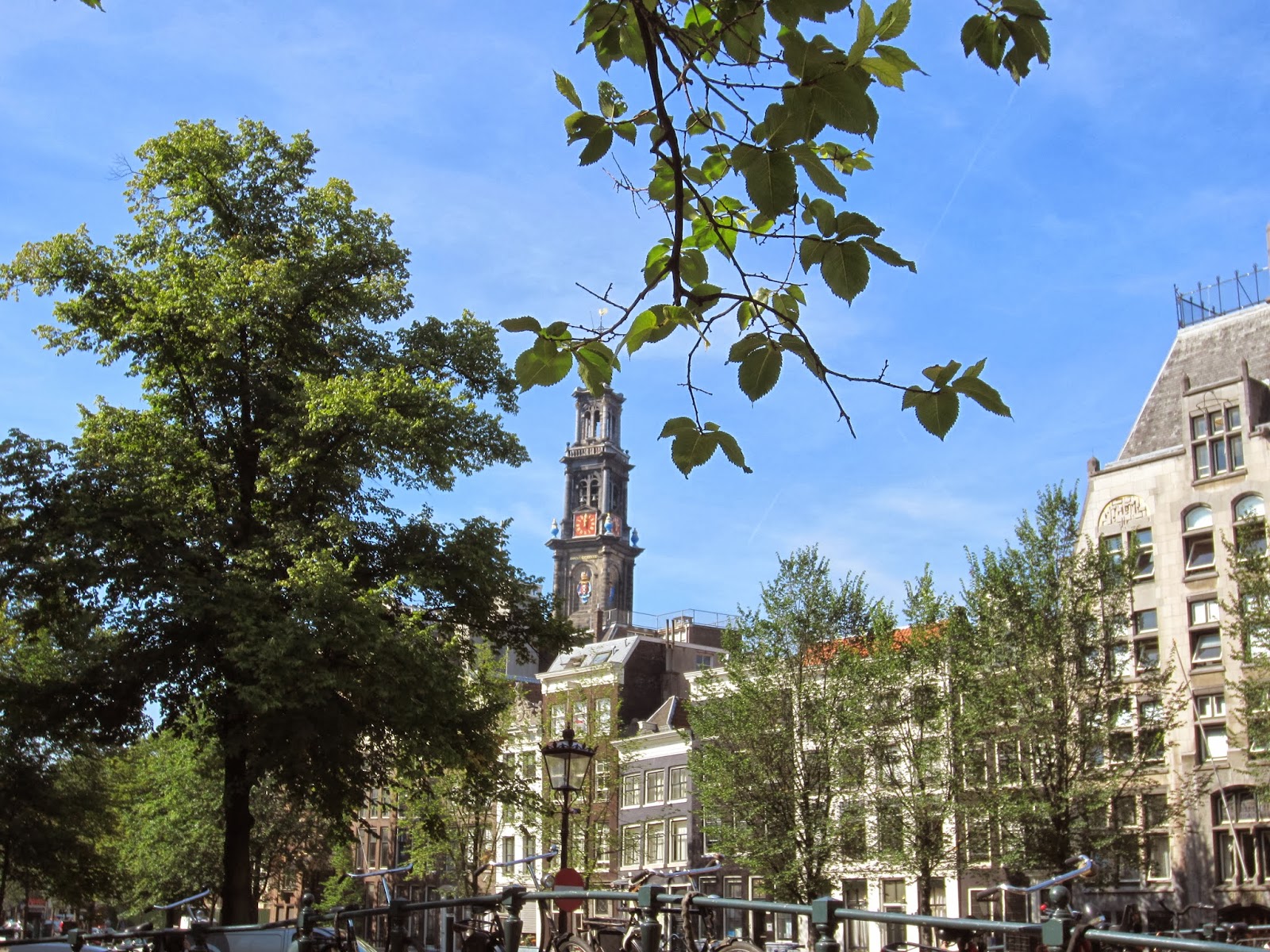After leaving Ludo's coffeeshop (I was surprised how many of us bought a little treat), Hilbren walked us back through the city. I had no idea where we were or where we were going but he pointed out important buildings and continued to teach us some more history along the way. The Rick Steves' guides never stop teaching!
Amsterdam's tallest steeple belongs to the landmark church, Westerkerk (built in 1631), and has a crown at the top (not visible in this photo). It was a gift of the Habsburg emperor, Maximilian I, and as thanks for a big loan, the city got permission to use the Habsburg royal symbol. The tower also displays the symbol of Amsterdam, its three Xs.
Hilbren tells us that Rembrandt's body is buried somewhere under the pews in this church but no one knows exactly where. The church tower's carillon chimes every 15 minutes--although I don't remember noticing this--and play full songs at other times. Invented by Dutch bell makers in the 1400s, a live musician plays the keyboard inside the tower to make the bells of different sizes and pitches "sing." During WWII, the Westerkerk's carillon reminded Anne Frank every day that there was, indeed, a world outside her window.
Amsterdam is one of the cradles of modern democracy. And despite its name, the Royal Palace used to be the City Hall. In medieval times, self-governing Amsterdam prided itself on its independence--thumbing its nose at royalty--and this was where the city council and mayor met. Around 1650, the old medieval town hall was replaced with an classical-styled building, recalling the democratic Greeks. The triangular pediment features denizens of the sea cavorting with Neptune and his gilded copper trident--all appropriate imagery for sea-trading Amsterdam.
The building became known as the Royal Palace in 1806, when Napoleon invaded and installed his brother Louis as king. Even after Napoleon was defeated, the victorious powers dictated that the Netherlands remain a monarchy under a noble Dutch family called the House of Orange. Today, the palace remains one of the four official residences of King Willem-Alexander. (Though Amsterdam is the nominal capital of the Netherlands, all government activity--and the King's actual permanent home--takes place in The Hague, 30 miles away.) Hilbren pointed out that the palace needs to be cleaned. However, city officials, he said, are reluctant to construct the scaffolding to accomplish this because the palace must be presentable at all times in case there is a royal funeral.
At one point, we walked by this "big head" statue honoring a writer known by his pen name, Multatuli. Born in Amsterdam in 1820, Multatuli (aka, Eduard Douwes Dekker) sought his fortune in Indonesia, a Netherlands' colony at the time. His semi-autobiographical novel written in 1860, "Max Havelaar," follows a progressive civil servant fighting to reform colonial abuses, which Dekker witnessed while working as a bureaucrat. He was the first author to criticize Dutch colonial practices--a very bold position back then--and for his talent and subject matter, Multatuli has been dubbed "the Dutch Rudyard Kipling."




No comments:
Post a Comment